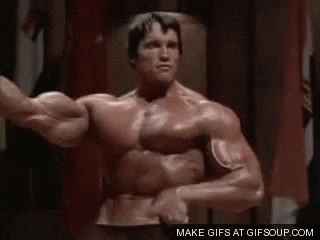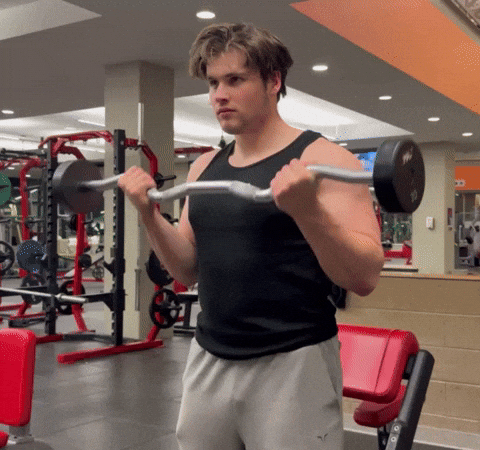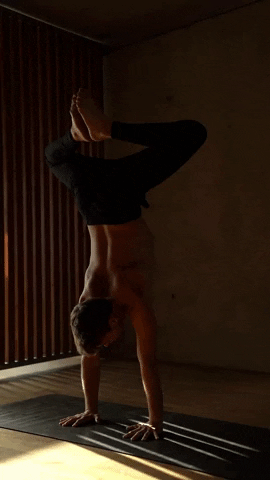The Best Gym Routine: a Goal Based Split
Breaking 2:55 (Ep 5)

Hey everyone and welcome to another running article!
First of all, if you are new, welcome! Make sure you are subscribed and you can get these letters straight in your inbox!
Today I wanted to do a brief dive into strength training. Specifically, I wanted to talk about splits.
And, no, not the stretching kind.
We are talking about training splits. Popular ones are like upper body, lower body, push, pull, bro splits. The list goes on.
Today, I want to introduce a new kind of split. One that I think supersedes all the others and will give you that motivation you need to train consistently in the gym, roads, trails, or wherever it is you train.
Let’s jump in!
Basics of a Split
First, let’s define the word “split.”
A split in this context is just the term used for describing how you “split” up your workouts throughout the week.
When you strength train, the goal is to stress your muscles, causing little micro tears. Those tears then use the protein we consume to rebuild and create bigger, stronger, and denser muscles.
The other benefit I’ve talked about before is that we see similar results in the density and strength of our tendons and ligaments. This is huge for injury prevention.
Hypertrophy vs Strength vs Power
These 3 words still confuse me.
I’ve been studying and consuming content in this space for a while and they still get me.
I think part of the confusion is that as humans, we are really good at taking simple concepts and overcomplicating them.
That is what I do with this newsletter each and every week. Running is a simple thing. We learn to do it when we’re 2 and nobody had to teach us anything about it. But when we start getting into the science of it all, it can get complicated very very quickly.
So because of that, here is my own “Meyer Perspective” definition of these words:
Hypertrophy - this is a big word but all it means is we want to build bigger muscles
Strength - this is a simple word and it means what it says, we want stronger (or denser) muscles
Power - this is a nuanced but also simple word that means we want strong muscles that can move quickly
And that’s kind of it, we want to improve the size, strength, or speed of our muscles. And sometimes all 3.
The main reason I bring any of these up is that there is nuance between these words when it comes to designing a workout plan. Some people swear by doing 5 reps of very heavy weighted exercises, other people target 6-12 reps of moderate weights, and still others like pushing up to 20 or 30 reps of body weight exercises.
From what I’ve learned, the studies actually show it doesn’t really matter all that much. The big claim is that the 6-12 reps targets hypertrophy and muscle building the best. But studies show you can still hit hypertrophy and build muscle with as low as 3 reps or even up to 50 reps.
The key is that the number of reps and weight gets you pretty close to failure. If you are doing that it doesn’t matter if it’s 50 reps of light weight or 3 reps of heavy, you can still achieve hypertrophy.
The other nuance about splits is how many times should we complete workouts in the week. And what exercises should we do.
There are different camps here too. Some people like total body workouts, others like splitting up the body parts so each workout focuses on a different one.
The science says once again, that it doesn’t really matter. The key here is that you will see the most growth if you train each muscle group twice a week.
Any more than that and you have diminishing returns or you may even ruin your rest.
Remember, rest is important because that’s when the muscle growth actually happens.
Some Classic “Splits”
Here are some typical splits you will see out there and talked about. Just so you see how people take these concepts of hypertrophy, strength, and power, and actually “split” up those workouts throughout the week.
Full Body Split
This is exactly how it sounds. Every time you go to the gym, you target every major muscle group: legs, chest, back, shoulders, arms, core.
You might repeat this 2-4 times per week. Again, when we train every muscle group twice a week we see a lot of improvement over training just once per week.
Studies have shown that total body splits are just as efficient in building muscle as any of the other more complicated ones. Despite any controversy.
Upper / Lower Split
This split also is how it sounds. You basically alternate between upper body and lower body sessions.
Typically you might train this way 4 days per week. Monday is upper, Tuesday is lower, Wednesday is a REST day, then repeat Thursday as upper and Friday as lower.
Again, here we can see we would end up training each muscle group twice per week, which is ideal.
Push / Pull / Legs Split
This split is very popular and instead of targeting specific muscle groups, it targets functionality.
Push exercises are ones where you push weight away from you or push yourself away from the ground. So think push-ups, bench press, overhead press, dips, etc.
Pull exercises are ones where you pull weight towards you or pull yourself towards something. So think pull-ups, deadlifts, rows, curls, etc.
Legs then get their own day too.
This rotation is often repeated twice a week, for 6 days of training, but ensures once again that you train each muscle group twice per week.
Bro Split
This is a classic split amongst the “bros.” Think gym bros, body builders, and influencers.
The idea is to hit every major muscle group once per week but split up throughout the entire week: (e.g., chest Monday, back Tuesday, legs Wednesday, shoulders Thursday, arms Friday).
You lose out on that twice per week per muscle group, but the benefit is you can really push each muscle group to it’s limit because that is the whole focus for the workout.
Because of that, this split really pushes hypertrophy, which is often the goal for people picking this split.
Powerbuilding Split
Powerbuilders often care about lifting heavy weight and they often focus on the main 3 lifts: squat, bench, and deadlift.
A lot of people do this split for competitions and are mainly lifting low reps and high weight, and will probably train 4-5 times a week with mainly these exercises plus some other accessory work to build the muscles that help with these exercises.
Bottom line is this is more of a competition style of training.
Power / Olympic Split
This is similar to powerbuilding, but now we are training more olympic lifts like snatch, clean, jerk, etc.
These exercises also build power and explosivity which definitely can help with speed, vertical jump, or explosive sports. This training split is very common with CrossFitters.
Goal Based Split
Are you confused yet?
If so, you’ve come to the right place.
I hope.
I get confused by all of this stuff too and this is why I came up with the term “Goal Based Split.”
What I mean by this is that you should pick your gym routine around what your goals are.
But you need to be specific. Too many people start going to the gym on January 1st with the goal: “Get healthy this year.”
“Getting healthy”, “getting fit”, “losing weight”, etc are all vague goals and mean something different to everyone.
The other problem is they don’t have an end.
When do you know you’ve “gotten healthy?” When you have visible abs? What happens when you get that and then you still don’t feel “healthy” and you want to have abs that pop instead? When your goal is to “lose weight” what happens when you lose that first 10lbs and then you say, “what about 10 more?”
You get my point.
These kinds of goals tend to lead to confusion and aimlessly working out at the gym with no true motivation or joy.
Here is what I suggest instead:
1. Start with Your Why
I think starting with very vague goals is actually ok.
But we need to reword them. Instead of your vague goal being a goal, make it your why.
For instance, my vague goal is that I want to be healthy enough to play with my grandkids.
What does that mean? It means I want good endurance and full body strength to run, throw a ball, pick up the kids, and maybe even snowboard with my grandkids.
That’s my “why” behind all the rest of my goals.
2. Pick Specific Goals
The next step is to now pick specific goals that are attainable, enjoyable, and align with your why.
For example, I get enjoyment around chasing marathon goals. I know it’s weird, but I do. Thus I design my lower body strength work and cardio work around how to become a more resilient and faster marathoner.
This is something attainable and enjoyable to me, but it also aligns with my big why of having endurance and strength in older age.
But if all I do is strength work for my legs, then I’ll have a weak upper body and I will be limited towards having that healthy full body in old age.
Upper body work doesn’t really relate to my running goals, however, so I need to pick some specific goals I want to achieve for the upper body.
For me, that is the full planche, the front lever, and a handstand. These are what I think of as cool calisthenics moves.
Here are pictures of them:
3. Split Your Workouts to Conquer Your Goals
After you have your specific goals that are exciting to you and align with your why then it’s time to actually split that up throughout your week.
If you breakdown the muscles that my specific goals work, you’ll start to see more of that push, pull, legs type of split, which is more or less what I do.
I have a “push” day dedicated to working on the full planche, a leg day dedicated to building powerful and resilient legs for running, a “pull” day dedicated to working on the front lever, and then when I have time I also have a martial arts day (because it’s fun) and a second leg day.
With that split, I work all the muscle groups twice a week, but every workout is designed to help get me closer to a very specific goal. And all those goals align with my overarching why.
TLDR;
If I had to sum up my main point, it is this: the best workout split to pick is the one you will stick with.
And I think the one you stick with is the one that gets you closer to fun goals. Because the main enjoyment in achieving goals truly is the journey.
So maybe your goal is to bench 225lbs. In that case, maybe a powerlifting and body building split will be better. Maybe your goal is to be able to play pickleball every night. So you need to pick workouts and cardio routines that help you get to that goal.
And that is what a Goal Based Split is all about:
Pick your why
Pick specific goals
Pick workouts that push you closer to those goals
I hope that this was helpful in some way! If you know someone else that would enjoy this newsletter, please consider sharing it along!
And as always, no matter what goal you’re racing towards, run with joy.
References
[1]: https://pubmed.ncbi.nlm.nih.gov/27102172 “Effects of Resistance Training Frequency on Measures of Muscle Hypertrophy: A Systematic Review and Meta-Analysis - PubMed”
[2]: https://pubmed.ncbi.nlm.nih.gov/30558493 “How many times per week should a muscle be trained to maximize muscle hypertrophy? A systematic review and meta-analysis of studies examining the effects of resistance training frequency - PubMed”
[3]: https://bmcsportsscimedrehabil.biomedcentral.com/articles/10.1186/s13102-022-00481-7 “A randomized trial on the efficacy of split-body versus full-body resistance training in non-resistance trained women | BMC Sports Science, Medicine and Rehabilitation | Full Text”
[4]: https://pubmed.ncbi.nlm.nih.gov/25932981 “Influence of Resistance Training Frequency on Muscular Adaptations in Well-Trained Men - PubMed”
[5]: https://www.frontiersin.org/articles/10.3389/fspor.2022.949021 “Frontiers | Resistance Training Variables for Optimization of Muscle Hypertrophy: An Umbrella Review”










Love this!